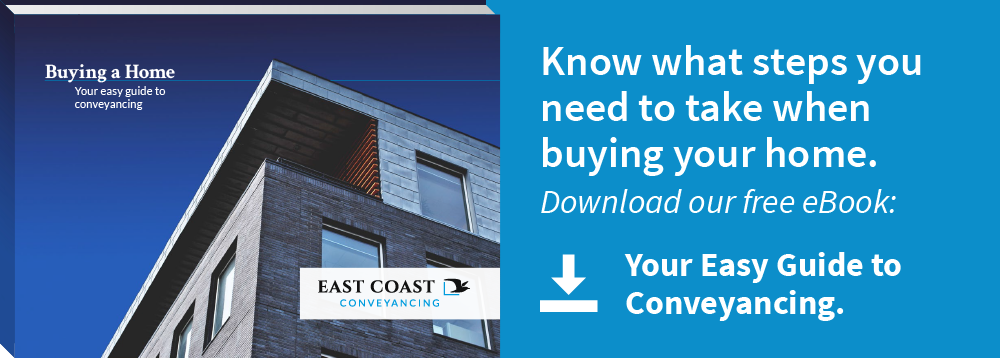From July 1 2018, purchasers of new residential property are required to pay GST directly to ATO
Jun 30, 2018 8:55:27 AM
From July 1, purchasers of new residential premises or potential residential land will be required to pay GST directly to the ATO. This new regime will see the responsibility of payment of GST to the ATO shift from the vendor to the purchaser.
Who will this affect?
The changes aimed at property vendors who fail to remit their GST liability will impact on residential property developers, conveyancers, solicitors, purchasers, lawyers, financers and any other party who usually operates in the property development industry.
The purchaser is now responsible for the payment to the ATO and as such need to be aware of this. The team of solicitors and conveyancers at East Coast Conveyancing can help you through the changes.
How does it apply?
Contracts signed before the 1 July 2018 will not be subject to the withholding requirements provided the consideration for the supply is first provided before 1 July 2020. If you don’t meet the 1 July 2020 payment deadline (excluding deposit), the withholding requirements will apply.
How it will work?
Where a vendor makes a sale of taxable goods (new residential home and/or land) the purchaser will be required to withhold 1/11th of that price and pay it directly to the ATO. This payment will need to completed on or before the day on which any part of the consideration for supply is first provided, other than a deposit. This usually occurs at settlement, however if there is any transaction that is made in instalments the GST will be due on receipt of the first payment.
To assist purchasers with this responsibility vendors are required to give the purchaser a written notice before the date the supply is made. The notice must state whether the purchaser is required to make a payment to the ATO and the vendors legal name, ABN and amount required.
In return, where the purchaser pays the withheld amount to the ATO the vendor will be eligible to a credit in its BAS which is equal to the amount paid by the purchaser.
Penalties
If the purchaser fails to withhold and pay the required amount to the ATO they will be required to pay a penalty equal to the amount of the withholding obligation. However, this will not apply if it was not laid out in the contract or the purchaser was relying on a notice provided by the vendor stating they were not required to pay the withholding amount.
These new changes come into effect from July 1 2018. The specialist team of solicitors, conveyancers and lawyers at East Coast Conveyancing can assist you in transitioning to the new process.
Return to Blog


